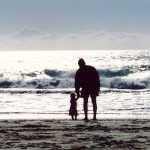Symptoms of Marfan syndrome
Marfan syndrome can affect many parts of the body, including the skeleton, eyes, and heart and blood vessels (cardiovascular system).
The severity of the symptoms varies widely. Some people experience a few mild symptoms, whereas others – about 1 in 10 – experience more severe symptoms.
The symptoms of Marfan syndrome tend to get more severe as a person gets older.
Skeleton
Someone with Marfan syndrome may have several distinct physical characteristics. They may be:
tall and slim, with long, thin arms and legs
have loose and very flexible joints
If your child is particularly slim or tall for their age, it doesn’t necessarily mean they have Marfan syndrome. It’s a rare syndrome, and your child will usually have a number of other symptoms if they have it.
Other physical characteristics of Marfan syndrome can include:
a small lower jaw
a high, arched palate (roof of the mouth)
deep-set eyes
a breastbone (sternum) that either protrudes outwards or indents inwards
crowded teeth
Scoliosis
Marfan syndrome can cause the spine to become abnormally curved to the sides. This is known as scoliosis.
Curvature of the spine can cause long-term backache. In severe cases, it can also make breathing difficult as the spine may press against the heart and lungs.
Spondylolisthesis
Spondylolisthesis is where one of the bones in your spine (a vertebra) slips forward over another vertebra.
This usually occurs in the lower spine, and can cause back pain and stiffness. Anyone can develop spondylolisthesis, but it more commonly affects people with Marfan syndrome.
Dural ectasia
The dura is the membrane that lines your brain and spinal cord. Dural ectasia is a condition where the dura becomes weakened and expands outwards.
People with Marfan syndrome are at particular risk of developing dural ectasia. As the membrane expands, it can press on the vertebrae in your lower back, which can cause:
backache
numbness or pain in your legs
Eyes
Many people with Marfan syndrome have some type of vision problem.
Lens dislocation affects half of all people with the syndrome. This is where the eye’s lens, the transparent structure that sits behind the pupil and focuses light, falls into an abnormal position.
Other possible eye-related symptoms of Marfan syndrome include:
myopia – short-sightedness
glaucoma – increased pressure in the eyeball which, left untreated, can cause permanent vision loss
aortic anyurism – where cloudy patches develop in the eye’s lens, causing blurred or misty vision
retinal detachment – where the light-sensitive layer of cells at the back of your eye (retina) begins to pull away from the blood vessels that supply it with oxygen and nutrients
Cardiovascular system
Marfan syndrome can affect the cardiovascular system, which is made up of your heart and blood vessels. It’s particularly serious if your aorta and heart valves are affected.
Aorta
The aorta is the main artery in the body. It runs from your heart, down the centre of your chest, and through your abdomen.
In people with Marfan syndrome, the walls of the aorta are weak. This can sometimes cause the aorta to enlarge and balloon, which is known as an aortic aneurysm.
In severe cases, the aorta can split (rupture), causing potentially fatal internal bleeding.
Valves
Your heart has four chambers that pump blood to and from the rest of the body. To control the flow of blood through your heart’s chambers, your heart has four valves:
mitral valve
aortic valve
tricuspid valve
pulmonary valve
These valves act as one-way gates, allowing blood to flow through in one direction. In some people with Marfan syndrome, the mitral or tricuspid valves don’t close properly and blood leaks back through the valve.
Read more about common mitral valve problems.
The aortic valve may also leak, leading to the main pumping chamber (left ventricle) gradually becoming enlarged.
Monitoring
If your GP thinks you may have Marfan syndrome, you’ll be referred to a specialist for testing. Your heart and blood vessels will be examined for the symptoms of the syndrome.
Read more about diagnosing Marfan syndrome.
Stretch marks
Stretch marks are pink, red, or white streaks in the skin. They can appear when you gain or lose weight quickly, when you have a growth spurt during childhood, or during pregnancy.
People with Marfan syndrome often develop stretch marks because the tissue in their skin is weakened and the skin isn’t as elastic as it should be.
If you have Marfan syndrome, stretch marks are most likely to appear on your:
shoulders
hips
lower back
Over time, they’ll gradually fade to a silvery colour and will be difficult to see.

